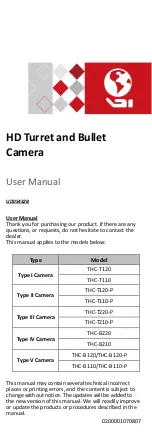
K12703 ; 31/43
- 31 -
(26)
Command “ARESET”
Function: Command for operation reset (All Reset)
Transmission from host:
STX: “ARESET”: ETX
Return by camera:
STX: ACK: ETX (transaction completion), or STX: NAK: ETX (transaction rejection)
This command is used to restore the camera to the initial power-on state. As power
–on processing is executed, Camera
Link output (synchronous signal, image signal etc.) gets temporarily indeterminate
(Note) This command corresponds to the operation when the camera is restarted after the power is turned off.
The data stored in EEPROM are not lost.
(27)
Command “WID”
Function: Command for writing camera ID (set by user) (Write ID)
Transmission from host:
STX: “WID”: character string of up to 15 characters: ETX
Return by camera:
STX: ACK: ETX (transaction completion), or STX: NAK: ETX (transaction rejection)
The acceptable characters are English 1 byte characters (both upper and lower cases) and some special symbols as
shown below:
Usable special symbols······ SP(H'20), !(H'
21), ’(H'27), +(H'2B), comma (H'2C), -(H'2D), .(a full stop mark)(H'2E),
/(H'2F), : (H'3A), ;(H'3B), <(H'3C), =(H'3D), >(H'3E), ?(H'3F), [(H'5B)], (H'5D), _ (H'5F)
(Note) When the number of the characters exceeds 15, (transaction rejection) is returned.
(Note) When the number of the characters is 0, the ID code is deleted.
(Note) Carefully note that ID is not correctly written when the character string to be sent includes an unusable character(s).
This case, however, is not regarded as error ((transaction rejection) is not returned).
(Note) This command does not execute the writing into EEPROM and therefore, the setting by this command is lost when
the power is turned off. If it is necessary to store the setting in EEPROM, transmit another command of
“SID”.
(28)
Command “SID”
Function: Command for saving camera ID (set by user) (Save ID)
Transmission from host:
STX: “SID”: ETX
Return by camera:
STX: ACK: ETX (transaction completion), or STX: NAK: ETX (transaction rejection)
The data of the current ID code is saved in EEPROM.
(Note) The ID code (character string) is saved in an area independent from the program pages, and this common value
(one numerical number) is applied when the camera is turned on with any one of the program pages.
(Note) No ID code is stored before shipment.
(29)
Command “RID”
Function: Command for reading out camera ID (set by user) (Read ID)
Transmission from host:
STX: “RID”: ETX
Return by camera:
STX: ACK: “RID”: character string of up to 15 characters: ETX (transaction completion), or STX:
NAK: ETX (transaction rejection)
The data (up to 15 characters) of the ID code (character string) is read out. When an ID code is not set, the number of the
characters to be returned is 0.
(30)
Command “RMG”
Function: Command for reading MGC gain (Read MGC GAIN)
Transmission from host:
STX: “RMG”: ETX
Return by camera:
STX: ACK: “RMG”: MGC set value: MGCB correction value(Upper right screen): MGCC
correction value(Lower left screen): MGCD correction value(Lower right screen): ETX
(31)
Command “WMG”
Function: Command for writing MGC gain (Write MGC GAIN)
Transmission from host:
STX: “WMG”: MGC set value: MGCB correction value(Upper right screen): MGCC correction
value(Lower left screen): MGCD correction value(Lower right screen):ETX
Return by camera:
STX: ACK: ETX (transaction completion), or STX: NAK: ETX (transaction rejection)
A 2 digit ASCII code from
“20” to “E0” in the hexadecimal system (32 to 224;decimal) is used for the MGC setting value.
A 2 digit ASCII code from
“80” to “7F” in the hexadecimal system (-128 to +127;decimal) is used for the MGC correction
value.
Example) When -2 (decimal) is set as a MGC correction value
STX: “WMG”: “.”: ”FE”: ”.”: ”.”: ETX













































